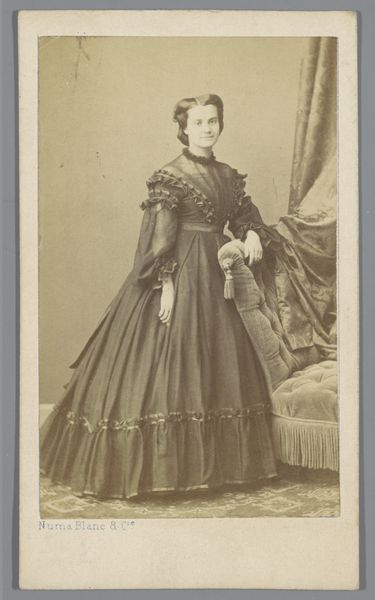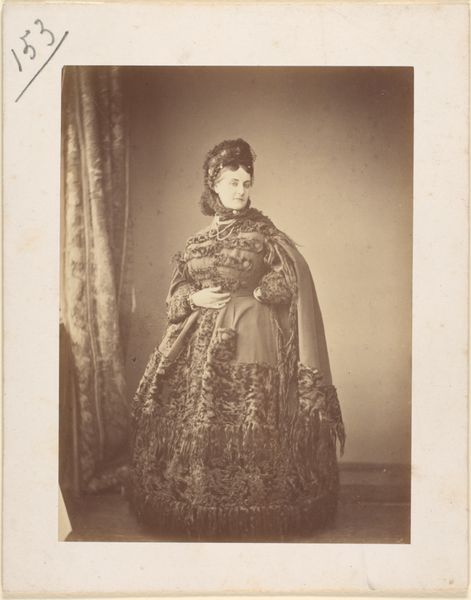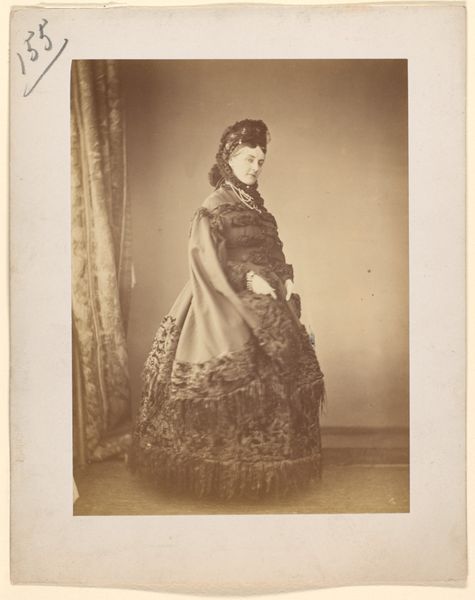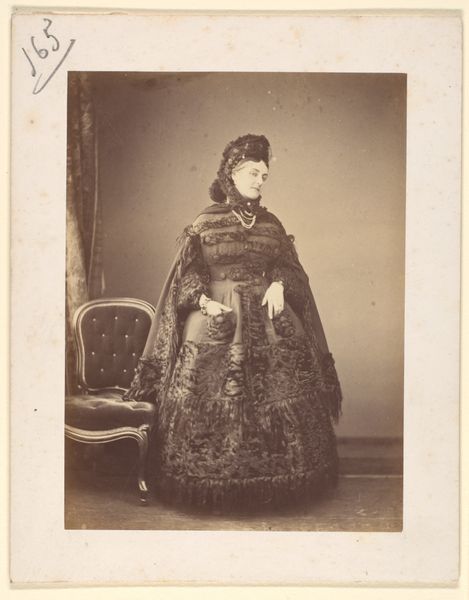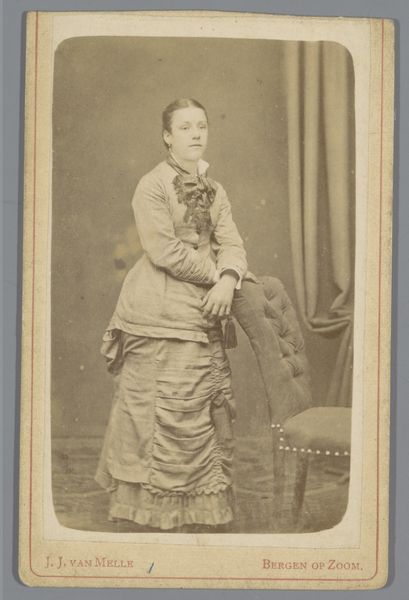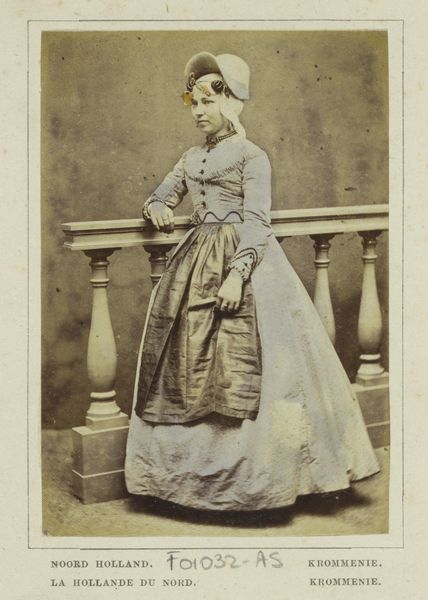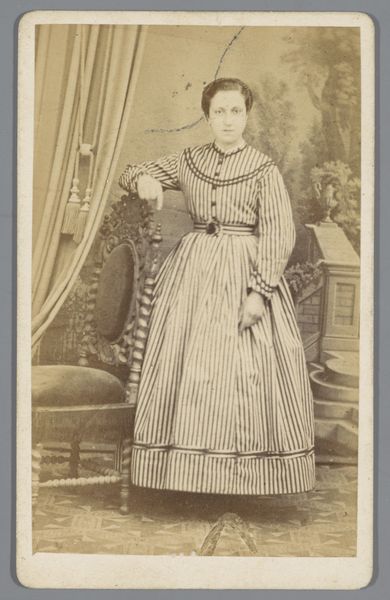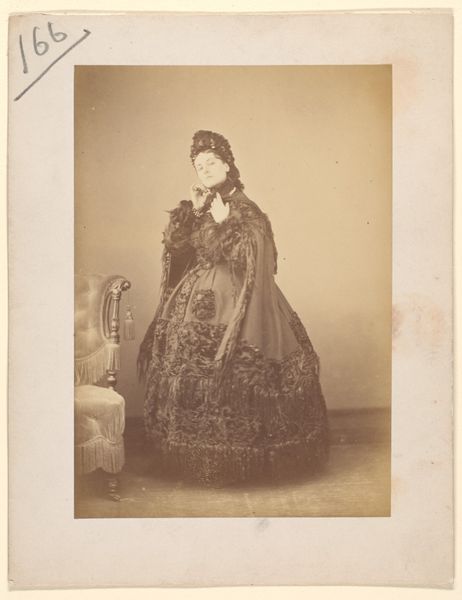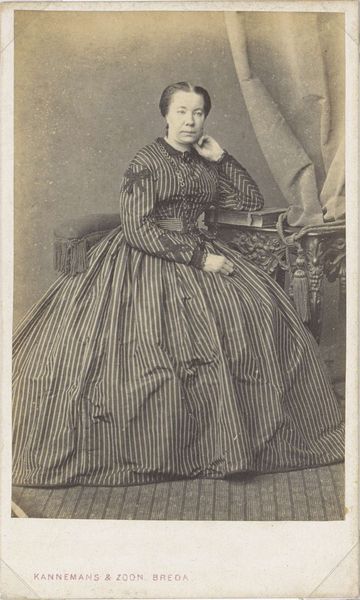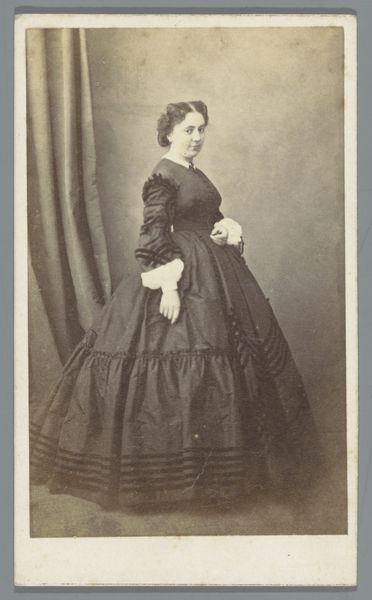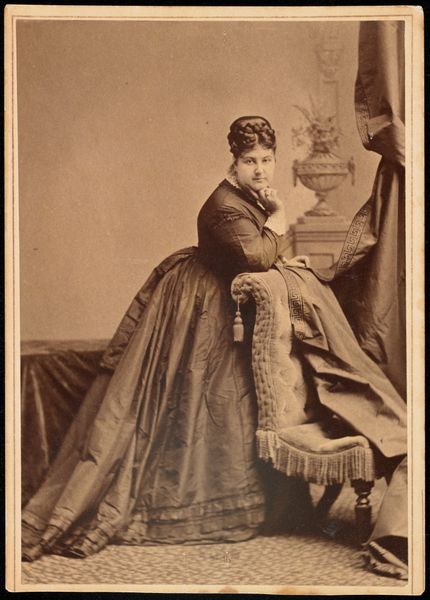
photography, albumen-print
#
portrait
#
archive photography
#
charcoal art
#
photography
#
historical photography
#
19th century
#
albumen-print
Dimensions: 3 3/4 x 2 1/4 in. (9.53 x 5.72 cm) (image)4 1/8 x 2 7/16 in. (10.48 x 6.19 cm) (mount)
Copyright: Public Domain
This is a photograph of Céline Montaland, captured by Jeremiah Gurney, a notable American photographer. Observe the cascading ruffles of her gown; these repeated, undulating lines are not merely decorative but are an echo of the waves of history, connecting us to ancient symbols of water and fertility. Think of the Minoan snake goddess, whose serpentine form embodies the life-giving force, or the flowing robes of Renaissance Madonnas. Across cultures, flowing lines evoke the subconscious pull of the life force. Montaland's dress, a Victorian interpretation, speaks to an underlying yearning for the eternal, for the comfort of nature's rhythms in an age of rapid industrial change. Through Gurney's lens, we see not just a portrait, but a link in the endless chain of human expression.
Comments
minneapolisinstituteofart almost 2 years ago
⋮
An important part of New York City-based photographer Jeremiah Gurney’s business was making small-size portrait photographs. Beginning in the 1850s, cartes de visite (calling cards, or visiting cards) photographs were popular. They were often made with a four-lensed camera, capturing four of the same image at once. They were printed eight on a sheet and each photograph was mounted on a thick cardboard paper sized 2.5 in. by 4 in. Cartes de visite were shared among families and friends, and mostly were stored in photographic albums. However, by the early 1880s, cartes de visite were replaced by larger cartes de imperiale (cabinet card), also albumen prints, mounted on cardboard backs measuring 4.5 in. by 6.5 in. Because of their size, cartes de imperiale would have been visible from across the room. As such, they were often displayed using frames and small stands.
Join the conversation
Join millions of artists and users on Artera today and experience the ultimate creative platform.

